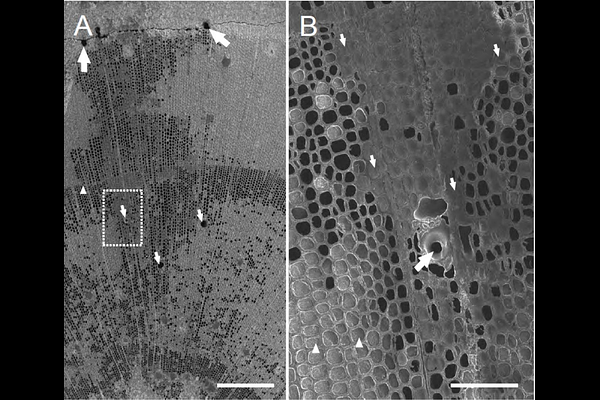Resin canal leakage underlying xylem dysfunction in pine wilt disease

Resin canal leakage underlying xylem dysfunction in pine wilt disease
Umebayashi, T.; Fukuda, K.
AbstractDuring the course of pine wilt disease (PWD), xylem dysfunction is induced (in the absence of water stress) by invasion of pinewood nematodes (PWN) into resin canals, and the infected pine trees wilt. When PWNs are inoculated to Japanese black pine seedlings, massive embolisms develop at the inoculation site. The developmental process of massive embolization to form an embolized zone is not well understood. We studied the development of xylem dysfunction around the inoculation site of one-year-old stems of PWN-infected seedlings using a combination of compact MRI and cryo-SEM. We visualized pathological changes in tracheids and resin canals in the xylem, and found that embolisms occurred in PWN-inoculated seedlings at a negative hydraulic pressure of -0.5 MPa. Resin canals in healthy trees were filled with resin. In PWN-infected seedlings, abnormal embolisms and resin were observed around resin canal near the inoculation wound. Empty tracheids were observed more extensively than resin-filled tracheids. We suggest that abnormal embolisms and resin leakage occur from damages of resin canals. Resin may seep into the tracheids when cell wall of the axial and radial resin canals is crushed. These embolisms under high water potential are unavoidable under natural conditions.